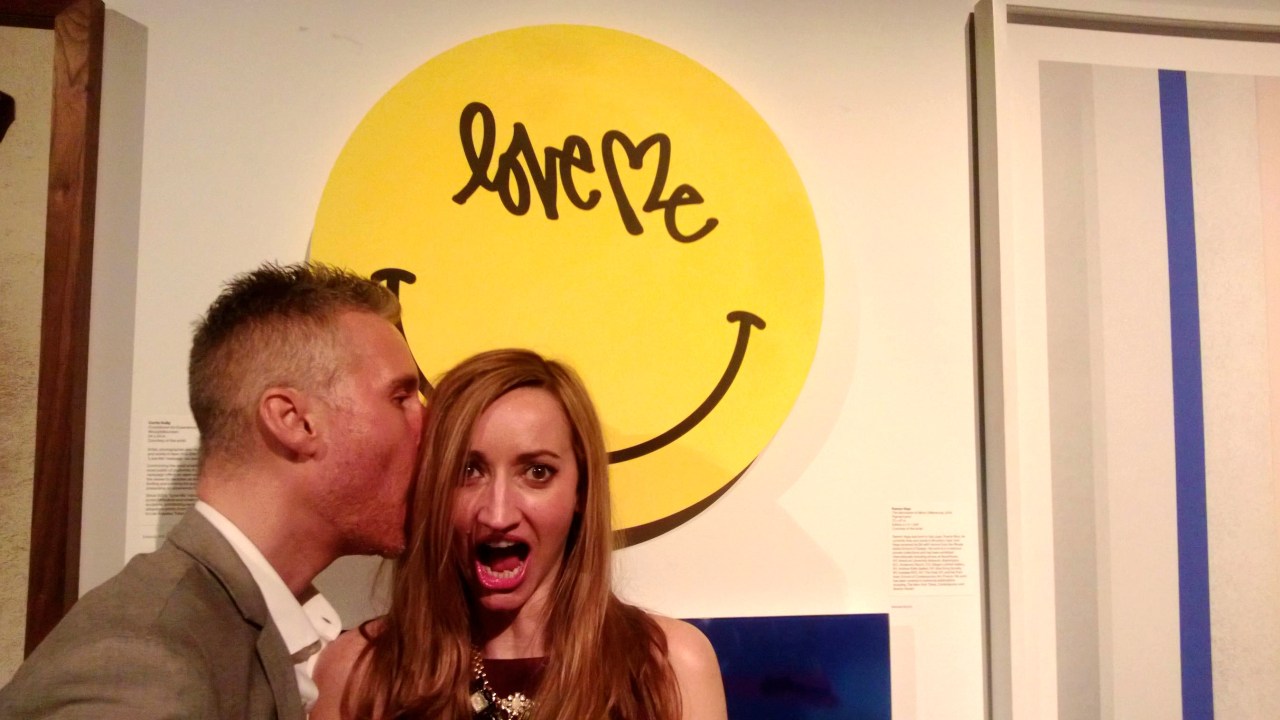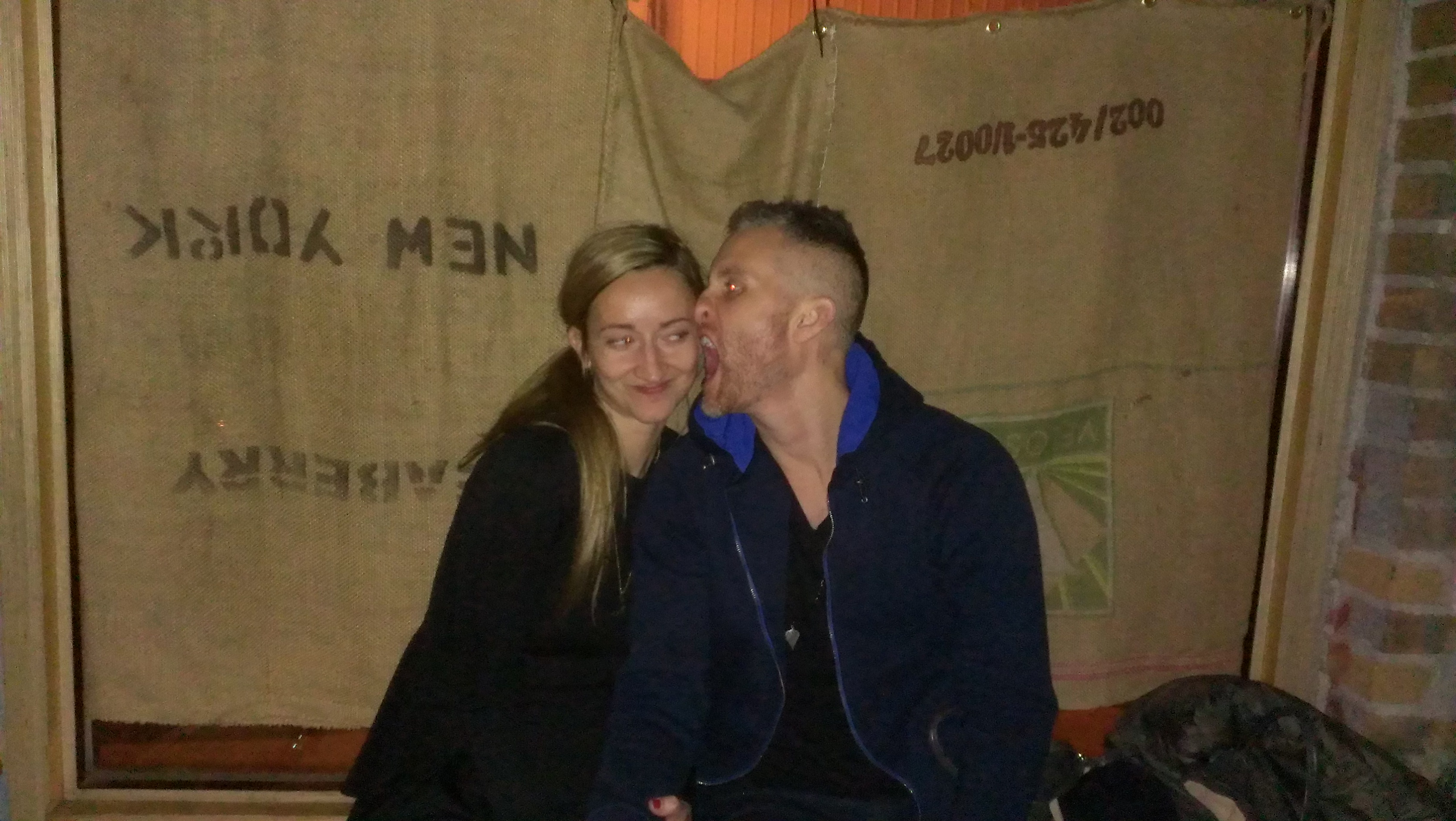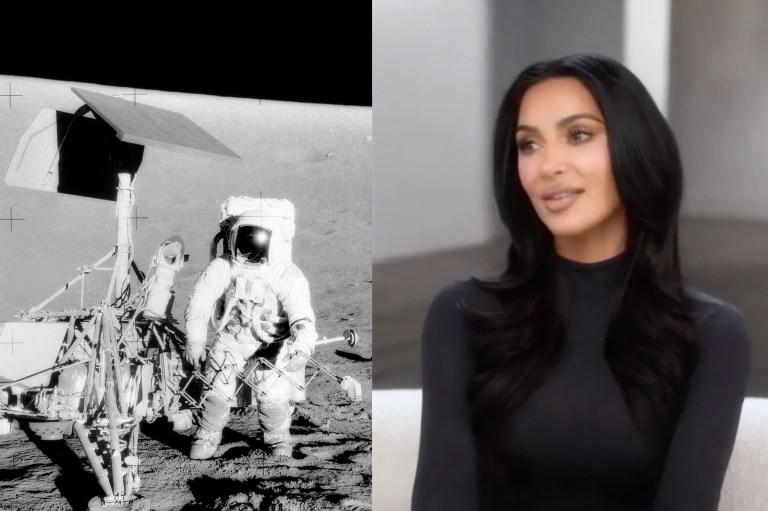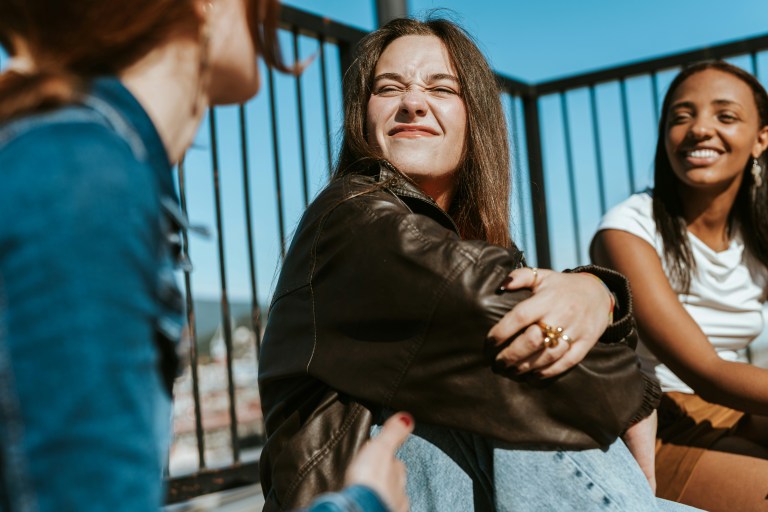
The Importance Of Kissing Beyond The Beginning
A couple of shots make it seem less odd that almost every nook—including an elevated, cushioned cubby accessible by ladder—is occupied by a twosome engaged in an aggressive round of necking and/or heavy petting.
At 11 p.m. one recent Friday, my boyfriend and I are snuggled on a faux suede ottoman at a bar in lower Manhattan called Madame X—a typical night out, you might think, except that we’re here for a Lip Service party. Billed as a monthly “pansexual kissing & cocktails” event, attendees (admitted only in pairs) pay $10 a head to mingle and make out in an open environment.
Though we’re not a shy duo when it comes to public displays of affection, we’re not in the habit of patronizing sexy gatherings populated by strangers, either. As I digest our surroundings, I have to remind myself that we’ve come for a reason: Two-plus years into dating, we’ve decided to test the sensual power of kissing—a fundamental sex act some scientists believe may be instrumental to perpetuating long-term passion. Could mindful smooching—and not naughty sex toys—really be the answer to barring boredom from the bedroom?
In accordance with the strict “flirty and fun” dress code (an impressively dapper bouncer denies entrance to several “insufficiently festive” couples), my boyfriend is wearing a fedora and a hot pink boa. I’m in four-inch Mary Janes, a short black skirt, too many bangles, and a sparkly headband. Though I had initially scoffed at the idea of dressing up, upon entering the red-drenched, split-level space punctuated by copious seating arrangements, I understood immediately that costumes can promote playfulness and a sense of kinship.
In addition to coaxing those early stage stomach butterflies into action, locking lips can have physiological effects—on heart rate, blood pressure, and even pupil size—whether you’re a month or a decade into dating.
Tequila helps, too.
A couple of shots make it seem less odd that almost every nook—including an elevated, cushioned cubby accessible by ladder—is occupied by a twosome engaged in an aggressive round of necking and/or heavy petting. But, perhaps surprisingly, as accustomed as I grow to the atmosphere, voyeurism doesn’t inspire me to kiss my boyfriend.
I’m startled when he pulls my chin toward him and engulfs me in the kind of long, drawn out kiss even the most touchy-feely couple reserves for private. As he withdraws, he holds eye contact for several beats while sliding his hand from the nape of my neck to my breast, where it lingers before continuing down my side. I can’t recall the last time he’s kissed me so masterfully, if ever. I am definitely turned on—at least until an observer’s penetrating gaze rips me from the moment.
People in committed relationships tend to assume that “spicing things up” requires handcuffs, a whip, or a third party. But according to the Kinsey Institute’s Dr. Justin Garcia, the author of Evolution & Human Sexual Behavior, we may be underestimating our ability to connect through more benign sex acts.
Our lips, which are packed with useful sensory neurons, constitute our most exposed erogenous zone. So in addition to coaxing those early stage stomach butterflies into action, locking lips can have physiological effects—on heart rate, blood pressure, and even pupil size—whether you’re a month or a decade into dating.

It’s not that our tendency to associate kissing with beginnings is without merit. Kissing is a “gage of connectivity,” says Garcia, referencing research by evolutionary psychologist Gordon G. Gallup, Jr., of the University at Albany, who discovered that college students could be turned off by someone they lusted for right after a bad first kiss. Puckering up also plays a role in the mate screening process by forcing us to lean in, which lets our olfactory system make critical judgments. An oft-cited study by Claus Wedekind demonstrated that women prefer the scent of men whose major histocompatability complex (MHC), a group of genes related to our immune system, is most unlike their own. The less immune overlap, the better equipped a pair’s potential offspring. Hence the importance of taking a whiff before committing.
But while it may not be possible to recreate the transcendence of a first kiss with the immune compatible mate of your dreams, Garcia urges that “kissing—a behavior common across cultures, whether defined as blowing or nibbling on lips, rubbing noses, or exchanging saliva—may be key to long-term relationship contentment.”
In an extensive 2011 study involving committed, middle-aged to older couples in five countries, Dr. Julia R. Heiman found that tenderness in the form of kissing and cuddling was positively correlated to sexual satisfaction for both men and women. Partly prompted by Heiman’s findings, Garcia plans to compare the biological impact of kissing on people who identify as passionate couples versus those who are complete strangers.
On the back of my boyfriend’s impossibly seductive kiss, I begin to appreciate the eroticism in the air. Happily, I follow him to a window seat to make out some more.
When a shriek erupts directly to my left, I turn to find a girl in a long skirt and bunny ears bent at a 90-degree angle, receiving a series of spankings. She clearly enjoys each smack and the disciplinarian’s embrace that follows, but I’m flat out uncomfortable being forced into the role of spectator. I’m not at all against sexy spanking, but it’s distracting, and I’m not attracted to either party.
My boyfriend finally guides us to the back, where we speak to a man who’s waiting for his girlfriend to return from the bathroom. “I’m a regular,” he tells us, a line we hear at least five times throughout the night, making it tough not to feel like outsiders. By the time we take off around 2:00 a.m., neither of us is interested in returning.
The next day I report our experience to Garcia, who emphasizes the importance of environment.
Researchers at Lafayette College led by Dr. Wendy Hill studied changes in the levels of oxytocin (a hormone associated with attachment) and cortisol (a hormone linked to stress) in people before and after kissing their long-term partner. After finding that oxytocin levels in female participants failed to increase as expected, they hypothesized that their laboratory’s sterile environment was likely to blame and planned a second experiment in a more romantic setting.
In an interview with NPR, Sheril Kirschenbaum, the author of The Science of Kissing: What Our Lips Are Telling Us, echoes this notion: “A good kiss is very much about the individuals involved … but environment is so important.” Pressure and discomfort cause an increase in cortisol, and “kissing and cortisol don’t mix,” Kirschenbaum says.
After sharing this with my boyfriend, he surprises me that evening with a “kissing party” of our own. We experiment with different types of kissing and with kissing body parts that are typically overlooked—all within the confines of our home, while listening to music of our choice. It works.
Can you reproduce the magic of your first personal kissing party? Probably not.
But kissing certainly seems worth attention—even years after that first telling lip lock. There may be many factors to consider, but perhaps it’s the complexity behind an act we take for granted as simple that makes it so rewarding. ![]()











